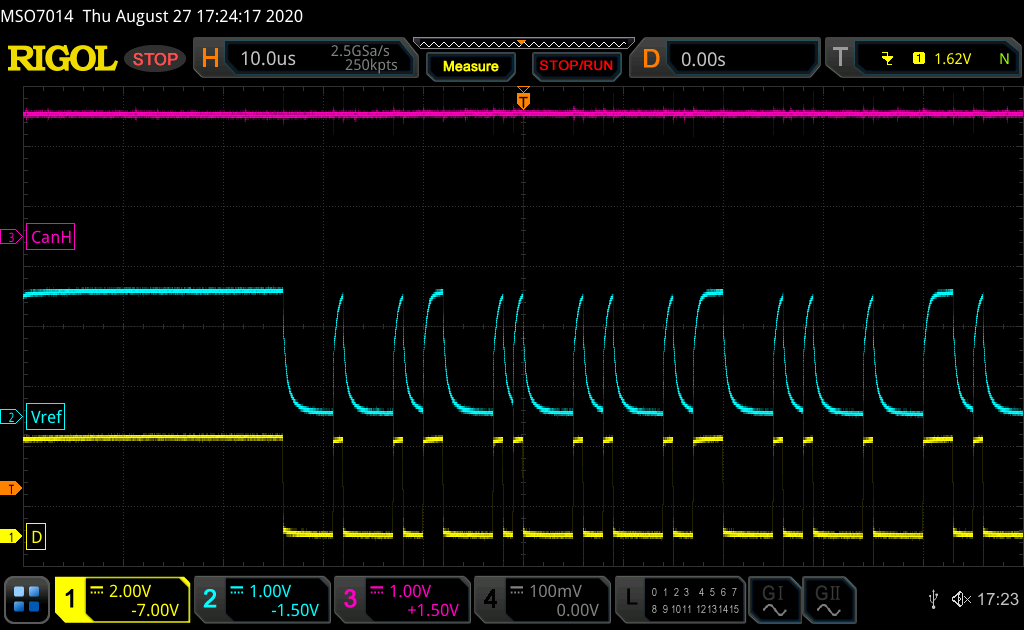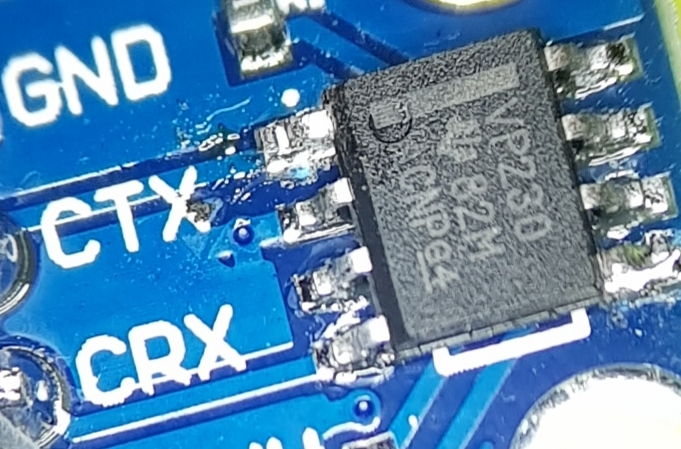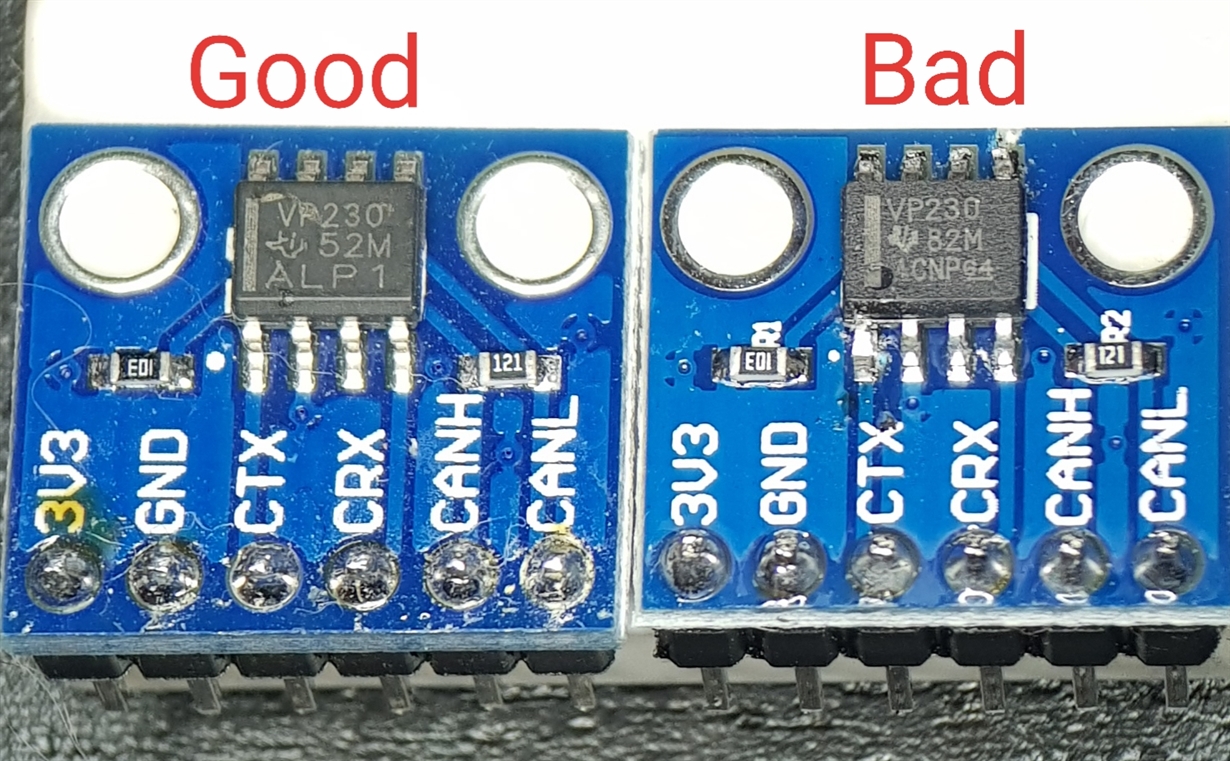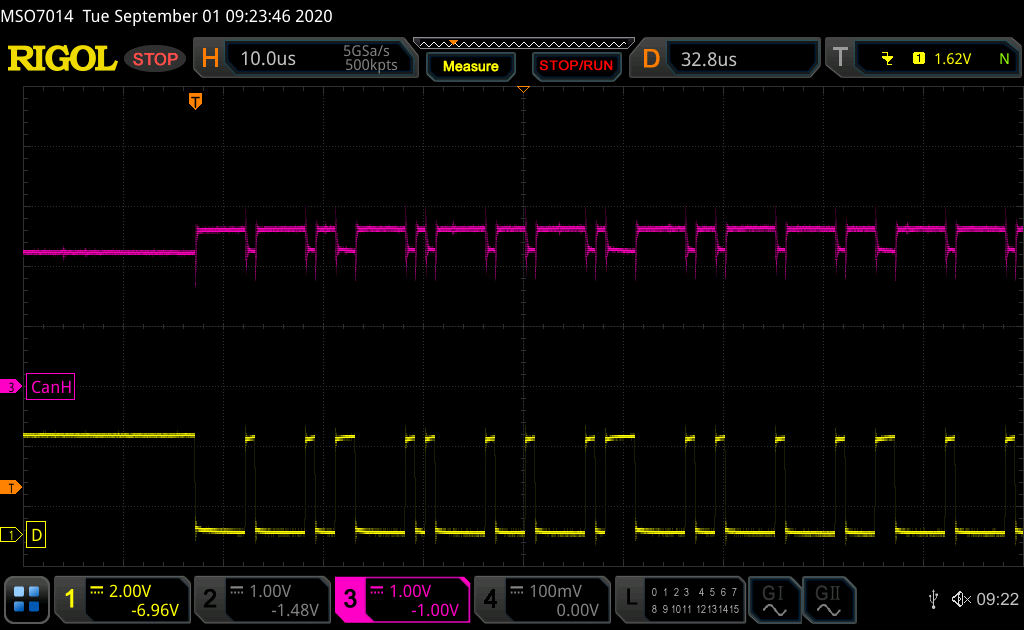Other Parts Discussed in Thread: TCAN332
Hello,
I am struggling to use the Can driver with an STM32: I purchased a board with just the driver and two resistors.
At 1Mbps the Vref collapses and the canbus doesn't even move.
I replaced with a short the slope compensation resistor, added 100nF + 10uF decoupling capacitors but still nothing; furthermore I am measuring 20kohm resistance between Vref and D pins, is that normal?
P.S. I tried with a TCAN332 and that works flawlessly, so the rest of the circuit must be ok.
Could this be a grey market IC?
I've attached a scope screen-shoot and a picture of the IC.







